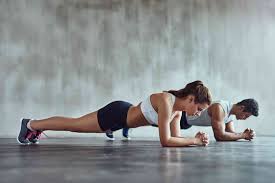Calisthenics Workout At Home: Both Powerful And Easy To Follow

Looking to cancel that gym membership and wish to begin an effective workout plan from home? Calisthenics workout at home is perfect. It is a type of strength-building activity that does not involve the use of machines. It is flexible, affordable, and perfect for any skill level. This guide helps you with simple and effective calisthenic exercises you can do at home. Whether you are a beginner or an expert, we have got you covered.
What You Are Going To Learn From This Document
- Understand what makes callisthenics exercises so powerful for enhancing fitness at home.
- A comprehensive, easy-to-follow exercise guide.
- How to achieve long-term goals and remain on track.
What Calisthenics Is and Why It Works
Calisthenics is a workout that uses your muscle strength. It targets specific body parts and helps improve movement, flexibility, and endurance. Consider pushups, squats, and planks. Also, think about advanced moves like handstands and muscle-ups. A unique aspect of callisthenics is that you don’t need expensive gym equipment. You can use what you already have at home.
Reasons Why You Should Be Doing Calisthenics Workout At Home
- You save money: no high monthly fees or advanced machinery are needed.
- You don’t need a lot of space; all that is needed is a small space that is free of obstacles.
- It is for everybody: perfect for those who are new to fitness and experienced athletes.
Setting Up for Success
Before starting your workout, organize your space and equipment for the best experience.
Choosing Your Workout Space
Look for a tidy, wide space you can comfortably stretch and move around in. A living room, backyard, or even a small balcony would be suitable. Make sure it is safe to walk on and does not have the potential to cause any slips.
Minimal Equipment (Optional)
You don’t need any equipment, but these items can enhance your workout for specific exercises:
A pull-up bar (great for upper body builds)
Resistance bands (perfect for providing support and extra tension).
A chair or sturdy table can also be used for dips and step-ups.
Safety Tips
Remember to always maintain correct posture to reduce the risk of injury.
Perform a thorough warm-up to get your body’s muscles and joints ready for exercise.
Let your body guide you; sharp pain should not be pushed through.
Warm-Up Routine (5-10 minutes)
Warming up helps your body get ready for tough workouts. It also reduces the risk of getting hurt.
Dynamic Stretches
- Arm Circles (shoulder mobility)
- Hip Circles
- Forward and Side Leg Swings
- Joint Activation
- Shoulder shrugs and wrist rolls.
- Ankle rotations and knee bends
Light Cardio
- Jumping jacks (1 min)
- High knees (1 min)
- Mountain climbers (30 sec)
The Simple Yet Effective Full-Body Workout Plan
This plan uses only body weight. It targets all major muscle groups.
Upper Body Strength
Beginner: Knee pushups and incline pushups with a sturdy surface.
Intermediate: Standard pushups and chair dips.
Advanced: Decline pushups, archer pushups, one-arm pushups.
Core & Stability
Beginner: Planks (20-30 sec), normal crunches.
Intermediate: Bicycle crunches, hanging leg lifts (if you have a bar.
Advanced: Dragon flags, hollow body holds.
Lower Body Strength
Beginner: Bodyweight squats and step-ups to a low surface.
Intermediate: Jump squats, Bulgarian split squats.
Advanced: Pistol squats, explosive lunges.
Full-Body & Conditioning
Beginner: Bear crawls, modified burpees.
Intermediate: Frog jumps, pushups.
Advanced: Handstand pushups, muscle-up progressions on the pull-up bar.
Structuring Your Weekly Workout Plan
Weekly Schedule Example
3-5 days a week, incorporating rest days in between.
Warm-up (5-10 minutes), workout (30-45 minutes), and cool down (5 minutes).
Sets, Reps, and Rest
Beginner: 2-3 sets, 8-12 reps, and rest for 60-90 seconds.
Intermediate: 3-4 sets, 10-15 reps each, 45 seconds rest.
Advanced: 4-5 sets, 12-20 reps go by, then 30 seconds rest.
Measuring Progress, Staying Consistent, and Remaining Motivated
Keeping track of your progress will encourage you to continue.
Measuring Progress Cues
In a workout journal, write your reps and sets for each day.
Document monthly to show physical changes.
Overcoming Challenges
Don’t do the same exercises repeatedly. Make them enjoyable by adding variations.
Join motivational support groups or communities to find the inspiration you need.
Build a Stronger You, One Workout at a Time
Doing callisthenics at home helps you get stronger and feel more confident. The best part is you do not need pricey equipment or gym subscriptions. All it takes is some commitment and creativity within your normal routines. Make sure to remember that progress happens slowly. With every workout, you are one step closer.




